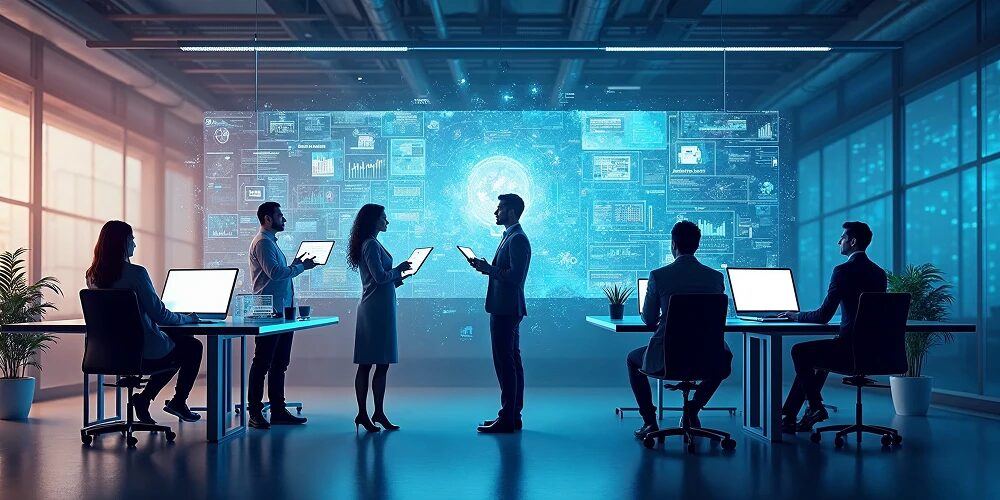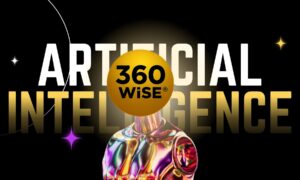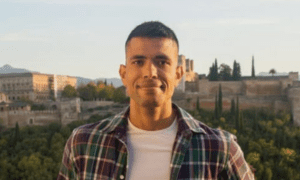Most executives I speak with are asking the wrong question about AI. They want to know which jobs it will eliminate, when really they should be asking how it can make their teams unstoppable.
Last month, I watched a small marketing team at a mid-sized retailer triple their campaign output without hiring anyone new. They weren’t using AI to replace people—they were using it to amplify human creativity in ways that surprised even me. The copywriter now generates dozens of headline variations in minutes, then applies her instinct for brand voice to pick winners. The data analyst spots trends across millions of transactions, while the marketing director connects those insights to customer emotions and market timing that no algorithm understands.
This isn’t science fiction. It’s happening right now, and the companies figuring it out first are leaving competitors scrambling to catch up.
Why Most AI Projects Miss the Mark
Walk into any conference room where executives are discussing AI, and you’ll hear two types of conversations: “How do we cut costs?” and “How do we avoid falling behind?” Both miss the real opportunity.
The companies winning with AI aren’t treating it like a more sophisticated calculator. They’re recognizing that artificial intelligence processes information differently than humans think, and that difference creates explosive potential when combined thoughtfully.
Consider what happened at a regional bank where I consulted last year. Their fraud detection system was catching obvious violations but missing sophisticated schemes that required understanding human behavior patterns. Instead of trying to make their AI smarter about human psychology, they restructured the workflow. Now, the AI flags statistical anomalies in real-time, while experienced investigators focus on the contextual clues that reveal actual fraud. Losses dropped 60% in six months.
The breakthrough wasn’t better technology—it was better collaboration design.
Getting the Partnership Right
Building effective human-AI teams requires abandoning assumptions about how work should flow. Traditional hierarchies assume information moves up and decisions flow down. Human-AI collaboration works more like jazz improvisation—each player knows their role, but the magic happens in real-time interaction.
Take product development. Engineers at one aerospace company I worked with were spending months analyzing component stress patterns. They tried using AI to automate the entire analysis but kept getting recommendations that looked good on paper but ignored manufacturing realities. The solution? Let AI run thousands of stress simulations overnight, then have engineers review clusters of results each morning. Now, they can explore design possibilities that would have taken years to analyze manually while ensuring every recommendation makes sense in the real world.
The key insight: AI doesn’t replace expertise—it multiplies it.
Where the Real Innovation Happens
I’ve seen human-AI collaboration transform everything from drug discovery to supply chain management, but the most dramatic changes are happening in spaces where creativity meets complexity.
A pharmaceutical research team recently used AI to analyze molecular interactions across millions of compounds, identifying promising candidates for Alzheimer’s treatments. But here’s what made the difference: instead of having AI pick the “best” compounds, they had it surface unexpected molecular patterns that human chemists could then interpret through decades of experience with drug behavior. Six compounds are now in clinical trials—discoveries that might have taken decades using traditional methods.
In architecture, designers are using AI to generate building layouts that optimize for energy efficiency, then applying their understanding of how people move through spaces to create designs that are both sustainable and beautiful. The AI handles the complex calculations around light angles and thermal dynamics; humans ensure the spaces feel inspiring to inhabit.
The pattern is consistent: breakthrough innovation happens when AI handles computational complexity while humans contribute wisdom that comes from understanding the world beyond data.
Making It Work in Practice
Most organizations stumble because they treat human-AI collaboration like installing software rather than developing a new capability. Success requires rethinking how teams operate, not just adding tools to existing processes.
Start with workflow redesign. Map out decision points where AI insights could inform human judgment and identify tasks where human oversight could improve AI accuracy. One retail chain saw a 40% improvement in inventory planning when they stopped having AI make purchasing decisions and started having it provide demand forecasts that buyers could adjust based on local market knowledge.
Train people differently. Traditional training focuses on using tools; human-AI collaboration requires understanding how AI “thinks” so humans can interpret its outputs intelligently. The most successful implementations include sessions where team members learn to spot AI blind spots and recognize when human intuition should override algorithmic recommendations.
Build feedback loops. AI systems improve fastest when they receive high-quality human input about their mistakes. Design processes that capture not just what humans change about AI recommendations but why they made those changes. This creates a learning cycle that benefits both AI accuracy and human decision-making skills.
The Competitive Reality
Companies that master human-AI collaboration aren’t just operating more efficiently—they’re competing in a different league entirely. While their competitors optimize existing processes, they’re discovering capabilities they didn’t know were possible.
A logistics company used AI route optimization combined with driver expertise in local conditions to reduce delivery times by 30% while cutting fuel costs. But the real breakthrough came when drivers started suggesting algorithm improvements based on what they observed on the road. The AI got smarter about real-world variables; drivers developed better intuition about systematic inefficiencies.
For organizations ready to move beyond experimental AI projects, working with an experienced AI solutions development company can accelerate the transition from proof-of-concept to business transformation. The technical implementation matters, but the bigger challenge is redesigning how humans and AI systems work together effectively.
What’s Coming Next
We’re still in the early innings of human-AI collaboration. Current AI systems excel at pattern recognition and optimization, but emerging capabilities in reasoning and creative problem-solving will create entirely new possibilities for collaboration.
The organizations positioning themselves for this future are those treating human-AI partnerships as a core competency right now. They’re learning how to structure collaboration, building cultures that embrace augmented decision-making, and developing the organizational capabilities that will matter most as AI becomes more sophisticated.
The question isn’t whether AI will change how we work—it’s whether your organization will lead that change or struggle to adapt to it. The companies figuring out human-AI synergy today are writing the playbook everyone else will need to follow tomorrow.
Smart leaders aren’t waiting to see how this unfolds. They’re building the future of work, one collaboration at a time.

































